Shinkansen vs Plane in Japan: Which Is Faster and Cheaper?
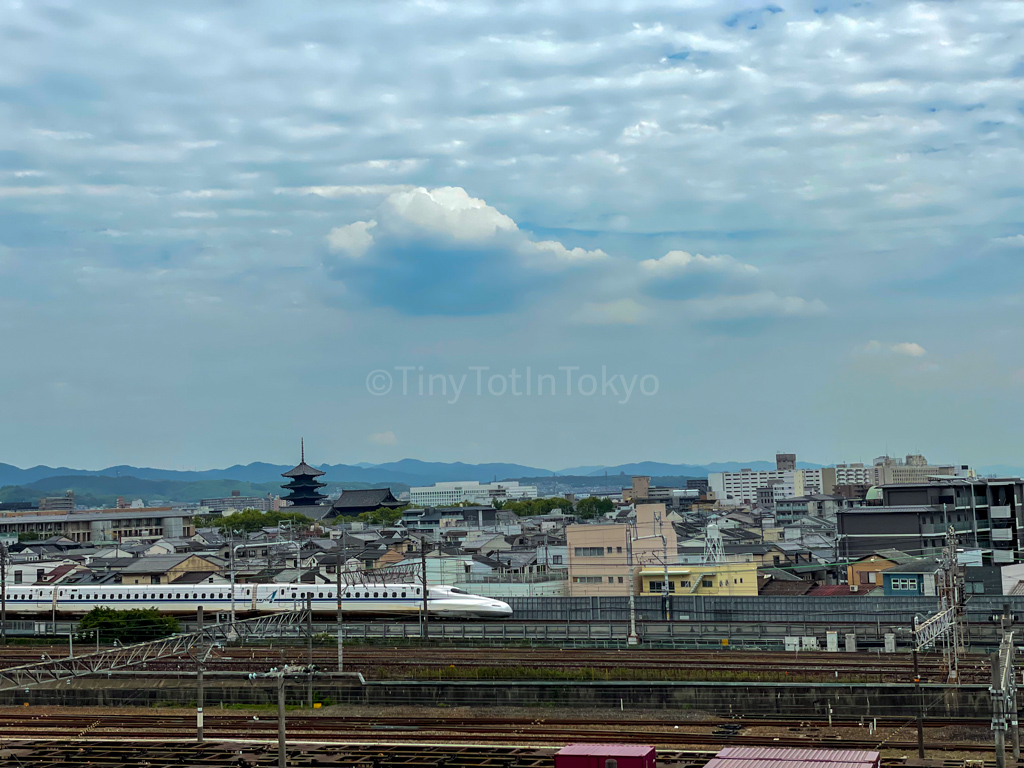
Last Updated on November 6, 2025 by Kay
This post may contain affiliate links, meaning I may earn a small commission on any purchases through those links at zero additional cost to you. Whatever I make goes to keeping this website running and I am forever grateful for the support. See my Privacy Policy for more information.
As a long-term resident of Japan who frequently travels across the country with my family, I’ve had my fair share of experiences with both trains and planes. My husband, a Japanese salaryman, also travels weekly from Osaka to Tokyo and then back again.
So if you’re planning your trip and wondering whether to hop on a bullet train or catch a domestic flight, this post will walk you through everything you need to know based on our experiences.
Both options have their pros and cons, so hopefully by the end, you’ll have a clearer idea of what suits your travel style, budget, and itinerary best.
Table of Contents
Traveling By Shinkansen Trains in Japan
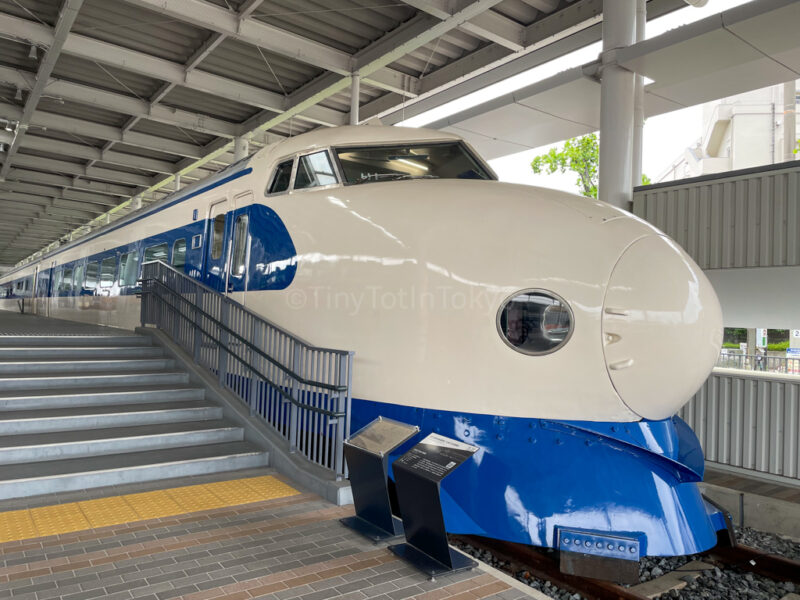
Japan’s rail system is one of the best in the world. If you’re in a major city like Tokyo or Osaka, trains run every few minutes, are incredibly punctual, and offer a smooth, efficient experience.
The Shinkansen (bullet train) is especially impressive — it not only looks good, but it’s fast and super convenient.
I feel like no Japan experience is complete without taking at least one ride on the Shinkansen. For the cheapest route that gives you just enough time to enjoy the ride, I suggest traveling by Shinkansen from Kyoto Station to Shin-Osaka Station. This costs 2880 yen for a reserved seat and takes about 14 minutes.
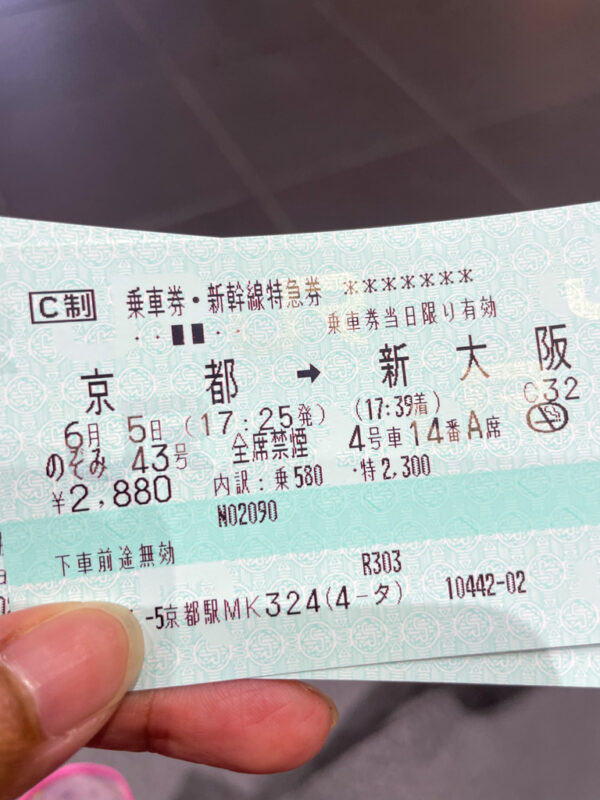
Flying in Japan: Domestic Airlines and Budget Carriers
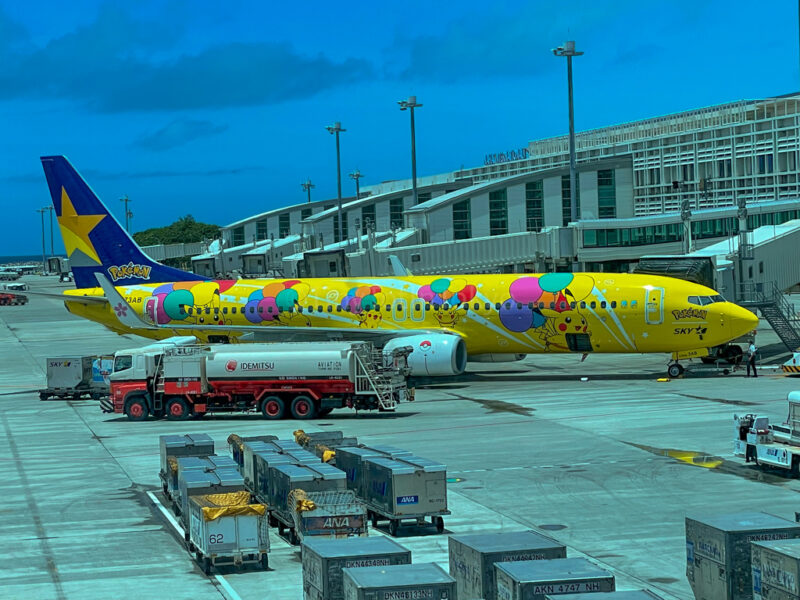
Japan has several main domestic airlines, with ANA (All Nippon Airways) and JAL (Japan Airlines) being the main full-service carriers.
There are also low-cost airlines like Peach and Jetstar Japan, which often offer incredibly discounted flights if you book in advance.
Plane vs Shinkansen Comparison: Which Should You Choose?
Here’s a breakdown based on what my husband and I have experienced personally:
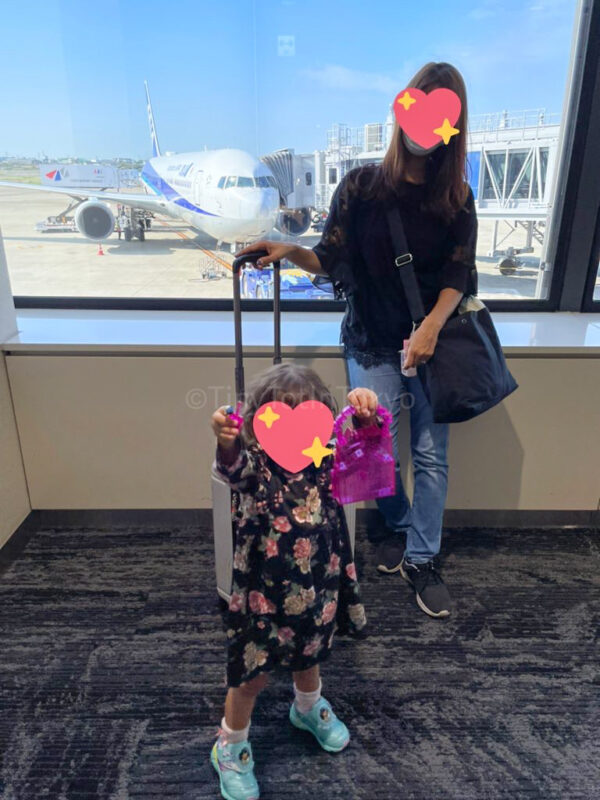
⏱️ Speed & Travel Time
Shinkansen: Tokyo to Osaka takes around 2.5 hours on the Nozomi (faster) or 3 hours on the Hikari (JR Pass-friendly). Trains run from central stations, and there’s no security hassle, which saves time. Shinkansen are also usually on time, although delays do occasionally happen.
Flight: While a plane ride from Tokyo to Osaka itself is only about 1 hour and 15 minutes, you’ll need to factor in getting to the airport, check-in, security, and travel from the airport to the city center. Door-to-door, flying can easily take 3.5–4 hours.
Flights can also be delayed, especially due to poor weather. Once, my husband experienced delayed flights at least once every week!
✅ Winner for Golden Route (Tokyo–Osaka): Shinkansen
✅ Winner for long-distance or rural destinations (like Kyushu or Hokkaido): Airplane
💰 Cost
Shinkansen: Prices are fixed and can’t be discounted much. A one-way reserved seat between Tokyo and Osaka costs around 14,500 yen.
Airplane: Budget airlines frequently run sales — it’s possible to fly round-trip from Tokyo to Osaka for as low as 10,000 yen! Even full-service airlines like ANA and JAL sometimes offer competitive prices, especially if booked early.
Personally, I like using Skyscanner because it can track flight costs and send you notifications when the price changes.
Notably, Japan Airlines is offering free flights within the country if you book your flight to Japan with them. This is a limited deal that’s running until late March 2026, although it might be extended.
✅ Winner for budget travelers: Flight
💡Kay’s Tip: If you’re flexible and can book in advance, flights are usually cheaper (and free if you book a flight to Japan with Japan Airlines!). However, keep in mind that sometimes there are sales to certain destinations in Japan because it’s not the best time to travel. For instance, my friend booked a very cheap flight to Okinawa during the rainy season — as she later told me, “You get what you pay for.”
🚉 Convenience & Accessibility
Shinkansen: Departs from and arrives in city centers (like Tokyo Station and Shin-Osaka). Shinkansen trains run every 10-15 minutes, and there’s no need to arrive very early or go through security. If you miss a Shinkansen, it’s easy to change your seat to a later one or simply hop on a car with unreserved seats.
Airplane: Airports are typically outside city centers (e.g., Narita for Tokyo, Kansai for Osaka), and flights run every 1–2 hours. You’ll also need to factor in check-in and baggage drop time.
✅ Winner for ease and flexibility: Shinkansen
🧳 Luggage & Baggage Rules
Shinkansen: You can bring large suitcases, but oversized baggage requires a seat reservation. There’s limited storage space onboard, so you might be inconveniencing other passengers, especially if your suitcase(s) are in the aisle. (I highly recommend using a luggage delivery service like Yamato.)
Airplane: Most airlines include one checked bag, and you can usually bring more if you pay. Budget airlines have strict baggage limits, so check in advance to avoid surprise fees.
✅ Winner for Japan travelers with lots of luggage: It’s a tie — you’ll need to pay either way.
🪑 Comfort & Onboard Experience
Shinkansen: Spacious seats, quiet cars, and a smooth ride. You can bring your own food or grab an ekiben (train bento box). It’s a cultural experience in itself.
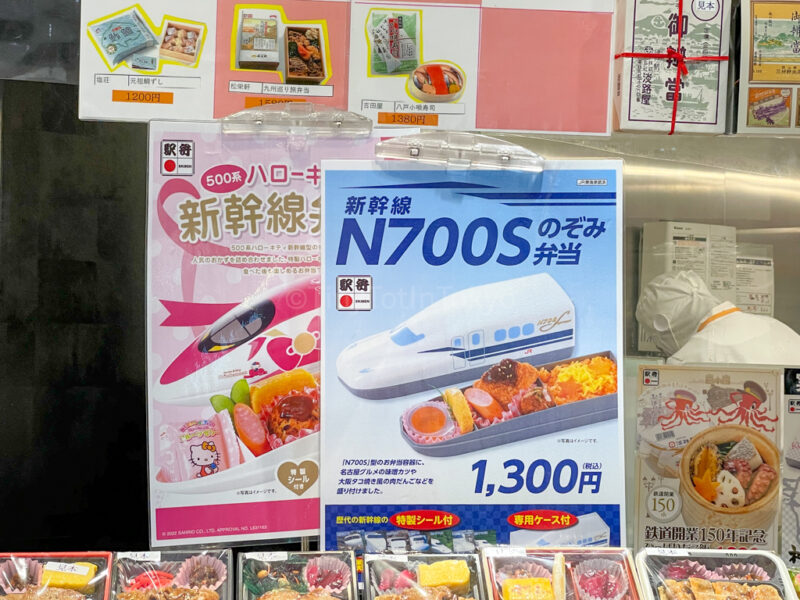
How cute is this children’s ekiben? It’s also easier to work on the Shinkansen or use the internet on your phone.
If you’re traveling from Tokyo to Kyoto or Osaka, you can see Mount Fuji from the window on the right side of the train. (Sit on the left side for Mount Fuji views when going back to Tokyo from Osaka or Kyoto.)
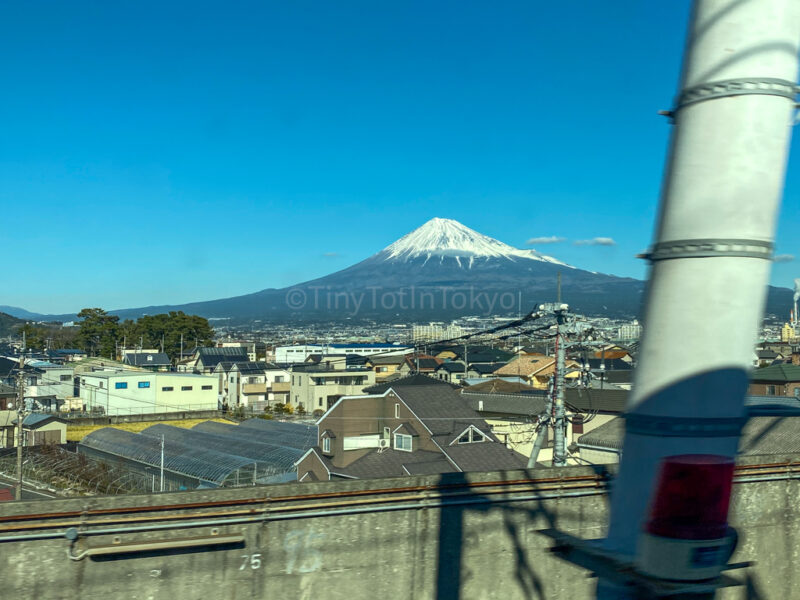
Airplane: Budget flights often mean cramped seats and limited amenities.
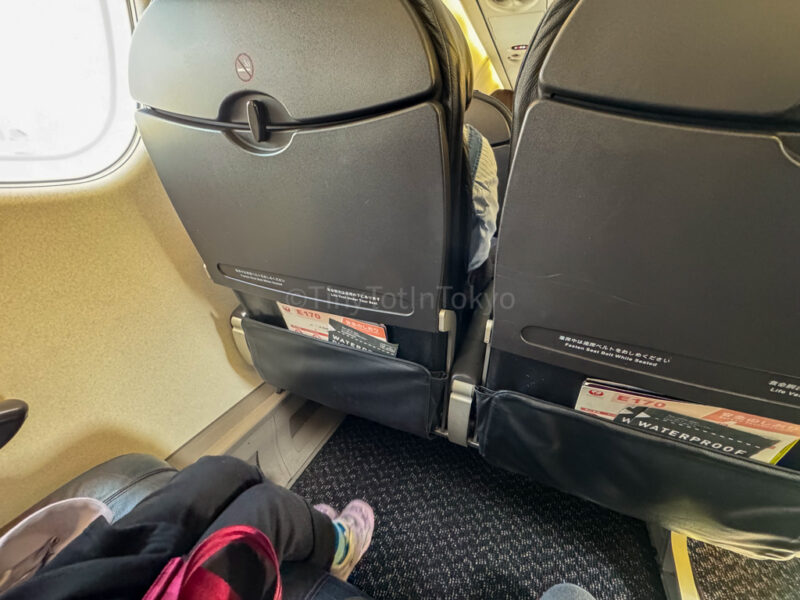
Seats and leg room on a domestic Japan Airlines flight. Full-service flights are better, but there’s still turbulence, queues, and sometimes delays. However, the view from the plane is stunning. Sometimes you can get a bird’s eye view of Mount Fuji from the window when you travel from Tokyo to Osaka.
Also, children get a freebie when they travel on JAL or ANA airlines. For instance, my daughter has gotten a wooden plane, a keychain, a sticker book, sunglasses, playing cards, and even a scarf!
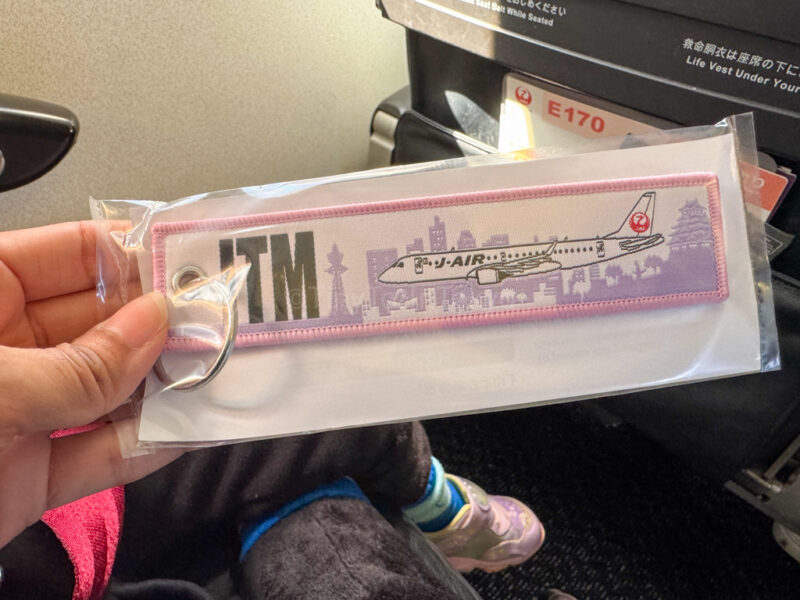
✅ Winner for families and first-time travelers: Shinkansen
🎯 Summary: Which One’s Right for You?
As you can see, there are pros and cons to both flying and taking the bullet train in Japan. Here’s a quick breakdown to help you make a decision faster about which to take.
| Traveler Type | Recommendation |
|---|---|
| First-time tourists | Shinkansen — for the experience and ease |
| Families with kids | Shinkansen — less stressful, no airport hassle |
| Budget-conscious travelers | Flights — especially low-cost carriers |
| Japan Rail Pass users | Shinkansen (Hikari) — included in the JR Pass |
| Time-pressed folks | Shinkansen (Nozomi) — fastest door-to-door |
| Traveling beyond Tokyo-Kyoto-Osaka | Flights — faster for long distances |
💡 My Personal Thoughts
My family usually chooses flying when traveling domestically in Japan, especially for routes like Osaka to Tokyo. Since we live near an airport, it’s faster overall, more affordable if booked early, and we like racking up airline miles.
That said, we still love the Shinkansen — especially when we have visitors or want a more relaxed travel experience. We would ride the Shinkansen all the time if it were cheaper and if we lived closer to a Shinkansen station.
If you’re new to Japan, riding a bullet train is something you should try at least once!
FAQ
Here are some frequently asked questions about traveling in Japan.
Should I buy a JR Pass?
The Japan Rail Pass (JR Pass) used to be a pretty good deal. However, it’s increased in price, and now I think the JR Pass is only worth it if you’re not sticking to the Golden Route (Tokyo-Kyoto-Osaka).
To break it down, a Japan Rail Pass for one week (7 days) costs 50,000 yen for an ordinary car and 70,000 yen for a green car for adults (ages 12 and up). JR Passes for children (ages 6-11) cost 25,000 yen for a one-week ordinary car pass and 35,000 yen for a green car pass.
On top of this, you can only use the HIKARI trains. If you take the NOZOMI or MIZUHO Shinkansen trains, you need to pay an additional fee of around 5000 yen. (A pain in the butt, honestly.)
Now, if you just make a one-way trip from Tokyo Station to Shin-Osaka Station, this will set you back only 14,520 yen. So, long story short, it’s cheaper to travel by Shinkansen from Tokyo to Osaka and then back again without using the Japan Rail Pass.
What’s the difference between a green car and an ordinary car?
A green car is more luxurious and spacious than an ordinary car; however, this comfort comes with a caveat — you need to reserve your seats in advance at a JR ticket office.
What’s the best airport to fly into Tokyo?
There are two airports in Tokyo — Haneda Airport (HND) and Narita Airport (NRT).
Personally, I like Haneda Airport because it’s closer to the center of the city and not as busy as Narita Airport. For instance, it takes about 45 minutes by train or limousine bus to reach Shinjuku Station from Haneda Airport.
Meanwhile, Narita Airport is located in Chiba Prefecture, so it’s not even in Tokyo! However, Narita is the larger airport with many international flights. It takes about 1.5 hours to arrive at Shinjuku Station from Narita Airport using the train, twice as long as from Haneda Airport. This is why I don’t like arriving at Narita Airport when I travel from Osaka to Tokyo.
What’s the best airport to fly into Osaka?
There are two airports in Osaka — Itami Airport (ITM) and Kansai International Airport (KIX).
Kansai International Airport has the most flights, both domestic and international, while Itami Airport is considerably smaller.
It takes about an hour to get from Kansai Airport to Osaka Station, with an added 20 minutes if you want to go straight to Kyoto (and you can take a cute Hello Kitty train, too!).
From Itami Airport, it’s about 30 minutes to get to Osaka Station and an hour to get to Kyoto Station by bus or by train (with lots of transfers if you take the train route).
I like Itami Airport because I live close to it and mainly travel domestically, so it’s more convenient. Since it’s smaller, it’s also much easier to navigate.

